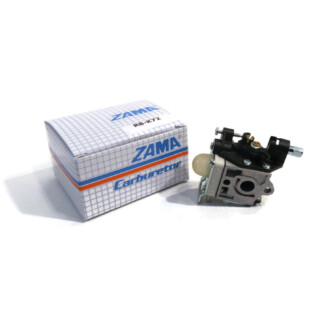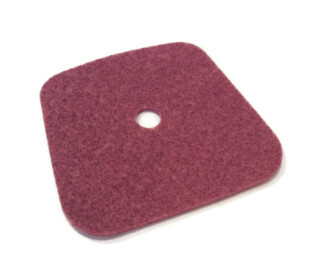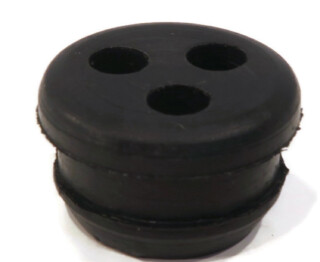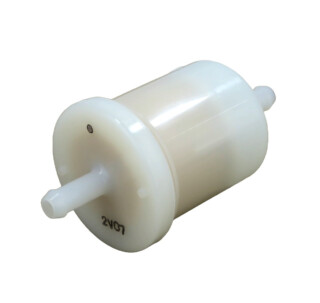
CFM vs MPH: How Do They Affect Your Leaf Blower?
We all want to get the best value for our money, so if you’re looking to buy a leaf blower, you’re probably doing your research. As a result, you’ve likely been bombarded with all sorts of numbers and data. Specifically, a couple of data points, CFM and MPH, come up frequently. What do these terms mean for your leaf blower’s performance? Read on to find out.
Before we start defining terms in detail, we should clear up a potential misconception. You might be wondering if there’s a formula you can use to convert CFM to MPH or MPH to CFM. However, as we’ll soon find out, these factors measure very different things. This means you’ll want to understand both so you can tell if a given leaf blower is right for you.
Keep in mind that understanding CFM and MPH is only a starting point for picking out a leaf blower. There are other factors that will likely impact your choice. That said, knowing what those numbers mean when you see them on leaf blower packaging should help a lot.
CFM and MPH in 30 seconds
We'll do our best to give you a comprehensive look at CFM and MPH in the rest of the article, but if you're in a rush, here's a summary of the most important points.
- CFM: cubic feet per minute—how much air is passing through your blower’s nozzle. It basically tells you how much space your blower can clear at once.
- MPH: miles per hour—how fast the air coming from your leaf blower is moving. It basically tells you how heavy of items your blower can move.
- MPH will increase as nozzle size decreases, while CFM will stay the same no matter the nozzle size.
- The best CFM and MPH for you will depend on how you’re planning to use your leaf blower.
What does CFM mean on a leaf blower?
CFM stands for cubic feet per minute, and learning what the acronym means has probably already given you a clue how it works with leaf blowers. It measures the volume of air that can pass through the blower’s nozzle in one minute.
To visualize what exactly this means, let’s suppose your leaf blower has a rating of 100 CFM and you were trying to use it to fill a giant, round balloon. Assuming optimal performance of your leaf blower, in one minute you could fill the balloon to be about 5 feet, 9 inches tall. This would be true no matter what MPH rating your 100 CFM blower has.
How does this impact leaf blower performance? Simply put, if the CFM rating is higher, your leaf blower will produce more air, and you’ll be able to clean a larger area in less time. You can think of the CFM as the “how much” factor in terms of the space you can clear.





What does MPH mean for a leaf blower?
You probably know that MPH stands for miles per hour, but how does this work when it comes to leaf blowers? Rather than how much air is being blown (CFM), MPH tells us how fast that air is going as it’s leaving the mouth of the leaf blower.
With greater speed comes greater force, giving you the ability to move heavier objects. You can think of MPH as the “how big” factor in terms of what things you can move.
CFM and MPH together
Looking at one of these factors without the other can give you the wrong idea of your leaf blower’s capabilities, so it’s important to understand how they work together to produce a usable amount of air force.
We'll continue explaining using the example of a pressure washer. If you’re already familiar with how pressure washers work with regards to GPM and PSI, you will probably catch on pretty quickly.
GPM (gallons per minute) is to pressure washers as CFM is to leaf blowers, except GPM is concerned with how much water the pump puts out per minute. As you know if you work with pressure washers, you need to have enough force to use the water effectively, which is where PSI comes in. Although your pressure washer’s pump will put out a fairly consistent amount of water in a given period, by changing your unloader valve, hose, and tip, you’ll dramatically change how fast that water is moving (and therefore how much force it produces).
For example, if you switch out your pressure washer’s tip for a smaller one, the amount of water leaving it in one minute is the same since the GPM remains constant. However, the only way for that same amount of water to exit in that minute is if the water moves faster to compensate for the narrower opening—which it does, increasing your PSI.
Furthermore, what would happen if you could reduce the GPM of your pressure washer? You’d have less water moving through your hose and tip, so your PSI would naturally decrease as a result. You could increase it again by making your tip smaller, but with a smaller tip you won’t be able to cover as large of an area.
The logic is very similar when it comes to CFM and MPH: just swap GPM for CFM and PSI for MPH, and you'll probably have a good understanding of how it works.
Varying CFM and MPH
Let's look at some examples to see how CFM and MPH affect each other.
High CFM and Low MPH
Let's say you have a leaf blower with a high CFM rating but a low MPH number. You can even imagine an extreme case—say 1,000 CFM and 1 MPH. How would such a leaf blower perform? You would have a ton of air coming out of it, but it would be moving very slowly. With so little force, you’d be extremely limited in what you can move around with it.
You might wonder how a leaf blower could even have 1,000 CFM but only 1 MPH. After all, how can you have all that air coming out but have it be so slow? Of course, this is a very fictionalized example, but the simplest solution is that the opening for the nozzle is very, very large. This way, a lot of air gets out in one minute, but there’s no “rush” to move it. The opening is so big that all of the air can just drift out.
This means that if you use a narrower nozzle with that same blower, you would increase the MPH. Think about it: the CFM remains constant, so you have the same total amount of air going through the nozzle. However, the nozzle is smaller now, so the only way for the same amount of air to pass through it as before is if that air moves more quickly.
Low CFM and High MPH
On the other hand, what would it mean for a leaf blower to have a high MPH but a lower CFM? Well, as we established, a leaf blower can achieve a higher MPH by forcing air through a smaller nozzle. This means that if a leaf blower seems to have a comparatively high MPH to its CFM, it’s probably because the nozzle is narrower. However, with a smaller nozzle your range will be more limited when you’re blowing leaves, so it’ll take you longer to clear a given area.
What CFM and MPH Is Best for You?
As you might have determined on your own by now, in an ideal scenario you would have a high CFM and a high MPH. However, manufacturers and dealers know the value of those factors, so they’ll set the prices accordingly.
If you can't afford a blower that ranks highly on both factors, err on the side of keeping your CFM high, even at the cost of your MPH. By swapping out the leaf blower’s nozzle for a smaller one, you can increase your MPH anyways, which will help you out when you need to move heavier items.

In this chart, you’ll see various leaf blower models and approximations of their CFM and MPH ratings. Now that you understand the significance of those numbers, you should be able to evaluate them properly. Of course, these are just small samples of the many leaf blowers available on the market, so here are some additional guidelines if you’re wondering what kind of leaf blower is best for you:
- Do you only have to clear half an acre of property or less? Are you a non-professional? You should look for a blower with 450-500 CFM and 150-190 MPH ratings.
- Are you a commercial landscaper? Do you have more than a half-acre of land to clear? Will your land require multiple cleanups (perhaps because you have many trees on your property)? If any of these apply to you, consider purchasing a blower with 900-1000+ CFM and 200-239+ MPH ratings.
Blowing Force
There’s another number you might see advertised on a leaf blower: blowing force. What is this, and how does it relate to CFM and MPH?
Together, CFM and MPH affect the overall force of your leaf blower. Blowing force, then, is a way of looking at both of those factors at once. It’s measured in Newtons (a standard measure of force) and is pretty simple to evaluate if you see that number on a leaf blower—the higher the blowing force, the better. No pressure washer analogies or thought experiments needed!





Technically, the process of calculating Newtons for blowing force can be a little tricky. There are other things besides CFM and MPH that are factored into it, such as humidity, pressure, and temperature.1
Fortunately, if you’re seeing blowing force on a leaf blower’s packaging, the work of calculating Newtons is already done for you, so there’s no need to overthink it.
You can expect a cordless leaf blower to produce somewhere in the ballpark of 8-17 Newtons and a professional backpack model to produce around 28-41 Newtons.1
Avoid Leaf Blower Grief
There you have it: our guide to understanding what CFM and MPH ratings mean for leaf blowers. We hope this information will help you find exactly the leaf blower you need.
However, no matter how perfect the CFM/MPH ratio is or how high the Newtons are, your leaf blower’s performance will suffer if you don’t take good care of it. Check out our website for replacement parts for leaf blowers. We offer free shipping to the Lower 48 States and have a great customer service department that’s ready to answer your questions.
Finally, if you're getting ready to prepare your leaf blower for winter storage, read our blog about winterizing outdoor power equipment.
Ready to learn more?
Sometimes good lawn care is about having the right equipment (like a leaf blower with an appropriate CFM and MPH). But other times it's about rolling up your sleeves and getting to work, whether that's fertilizing your grass at the right time or maintaining your mower through the summer.
The ROP Shop is here to help. Learn about lawn care, equipment maintenance, and other helpful topics on our Rugged U blog.
[REVISED 4/2023]

Having trouble using your ROP Shop pressure washer surface cleaner? These tips can help you out.

Thinking about getting a pressure washer? Here are eight advantages to owning a pressure washer to help convince you.

Installing a new pressure washer pump doesn’t have to be a hassle. Let The ROP Shop walk you through it.

Ready to learn how to pressure wash quickly, effectively, and safely? Check out these eleven tips.